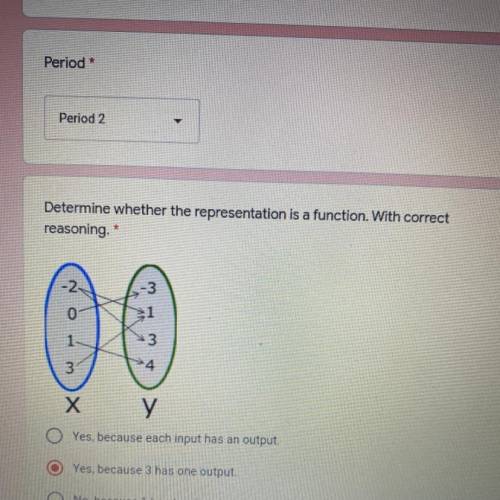Yes, because each input has an output.
Yes, because 3 has one output.
No, because 1 has...

Mathematics, 16.12.2020 02:10, TropicalFan
Yes, because each input has an output.
Yes, because 3 has one output.
No, because 1 has two inputs.
No, because -2 has two outputs.


Answers: 2
Other questions on the subject: Mathematics

Mathematics, 21.06.2019 14:00, TylerBerk5309
Assume that a population of 50 individuals has the following numbers of genotypes for a gene with two alleles, b and b: bb = 30, bb = 10, and bb = 10. calculate the frequencies of the two alleles in the population’s gene pool.
Answers: 2

Mathematics, 21.06.2019 16:00, johnnny7495
What were mkh company's cash flows from (for) operating activities in 20x1? $(180,300) $233,100 $268,200 $279,400?
Answers: 2

Mathematics, 21.06.2019 17:20, clairajogriggsk
Consider the proof. given: segment ab is parallel to line de. prove: what is the missing statement in step 5?
Answers: 2
Do you know the correct answer?
Questions in other subjects:

English, 25.03.2021 17:00

Biology, 25.03.2021 17:00

Mathematics, 25.03.2021 17:00


Mathematics, 25.03.2021 17:00

History, 25.03.2021 17:00

Mathematics, 25.03.2021 17:00

Mathematics, 25.03.2021 17:00







